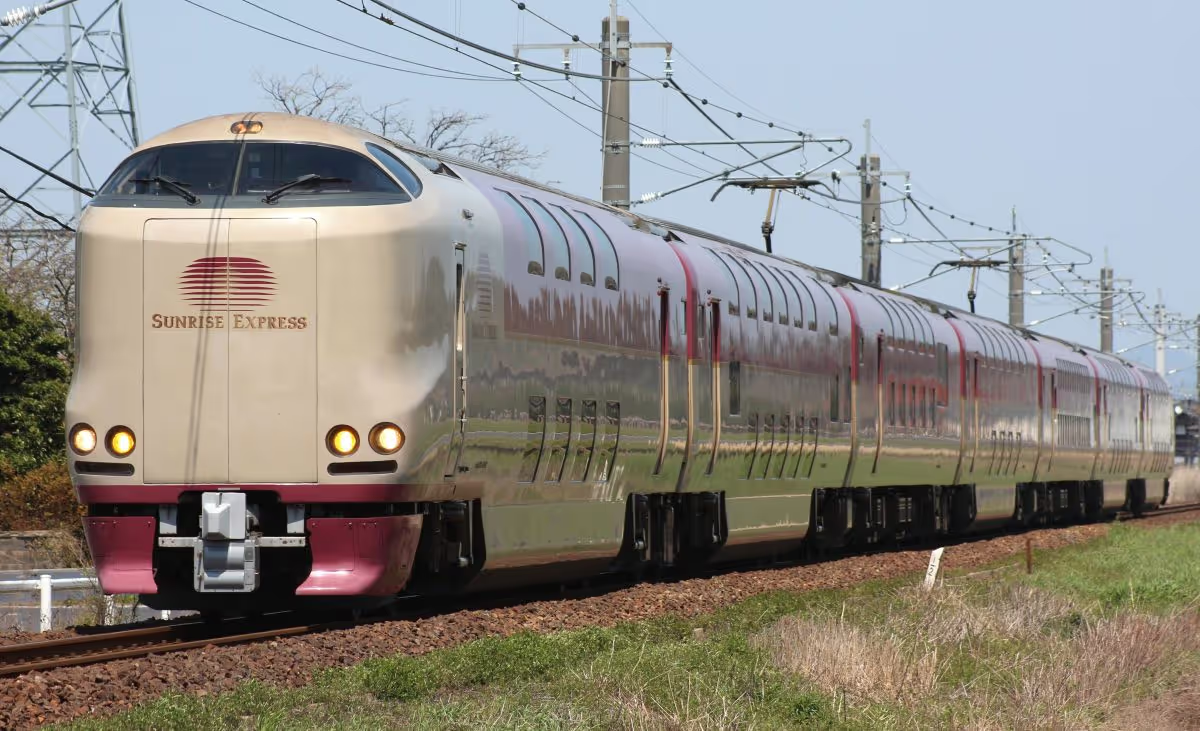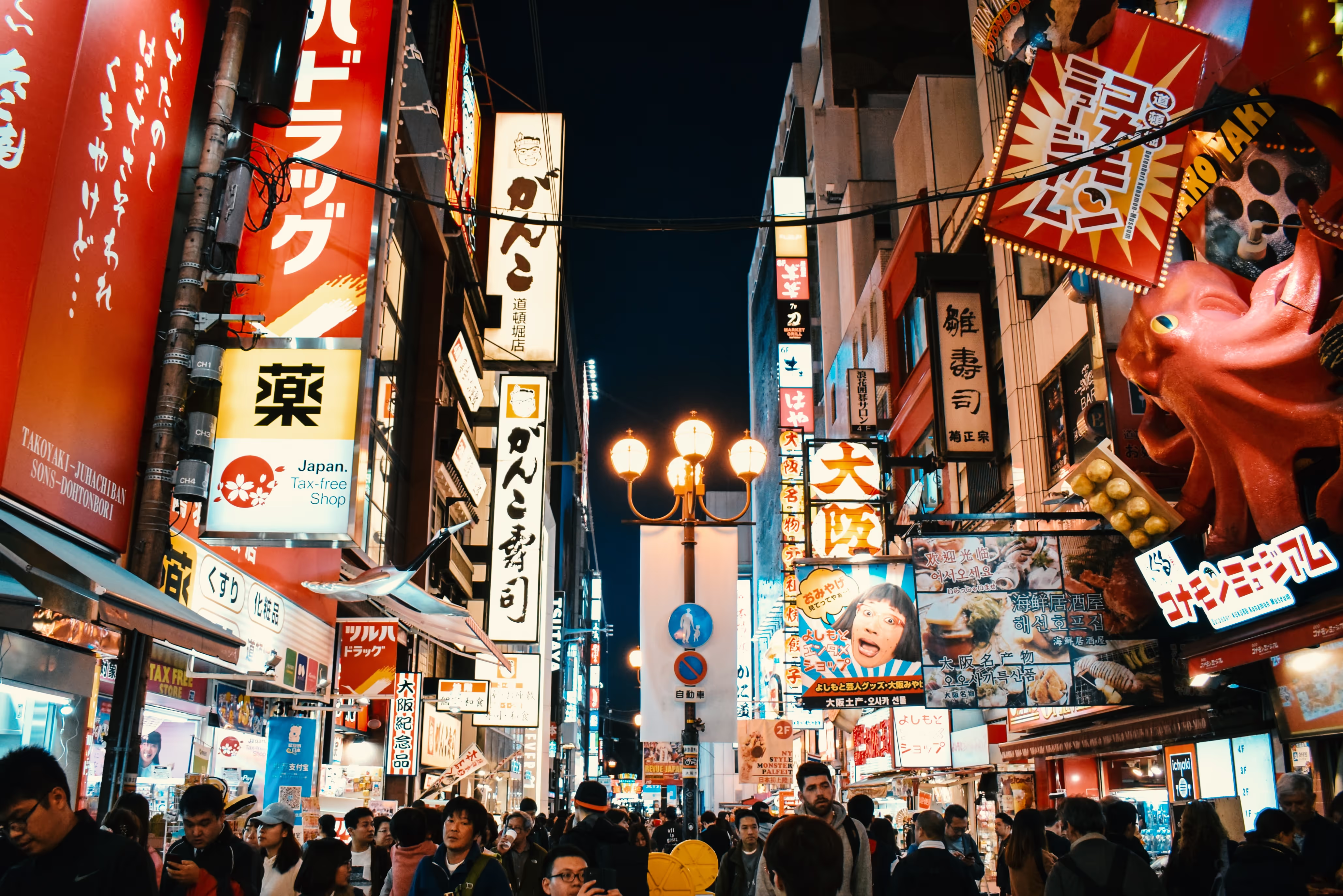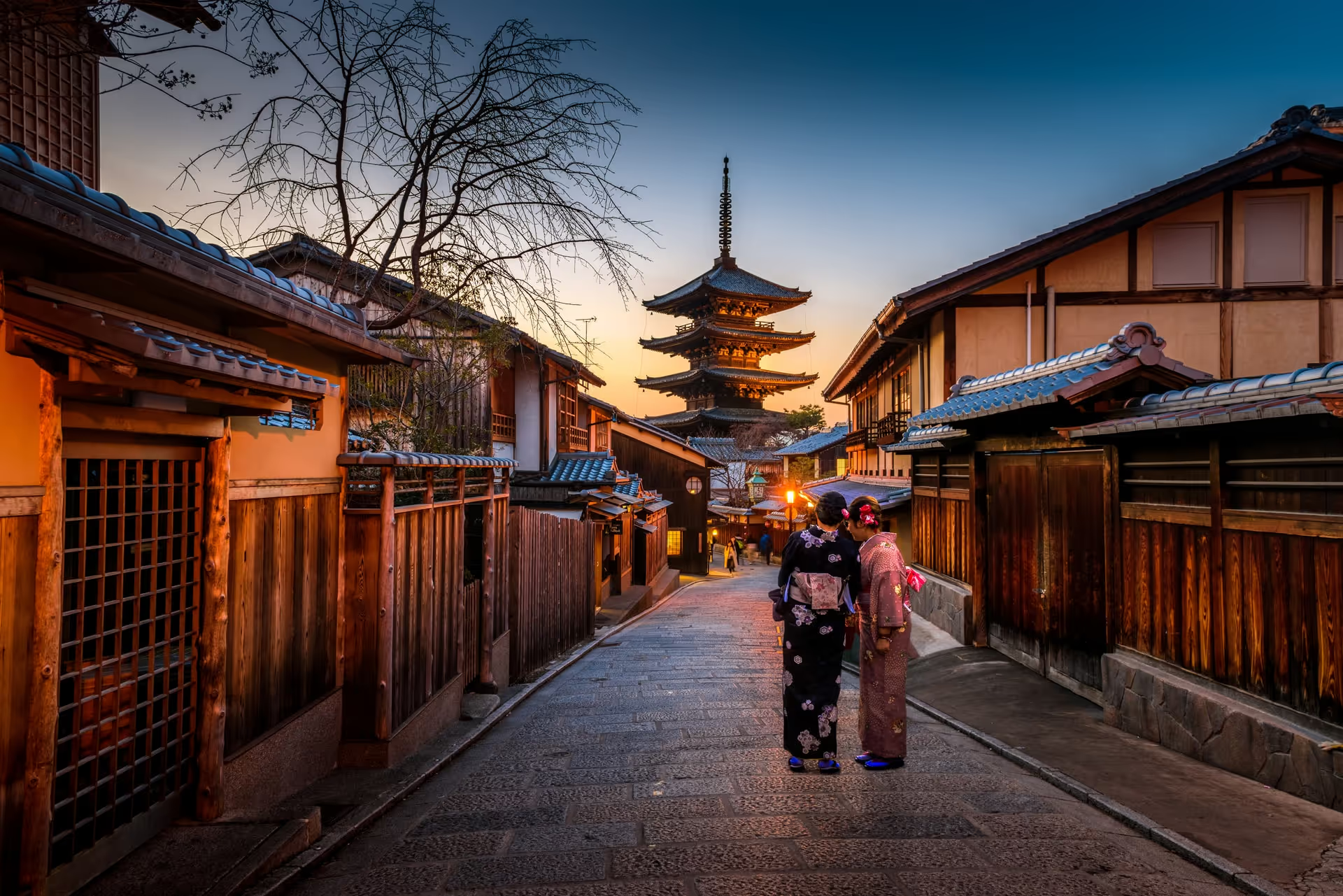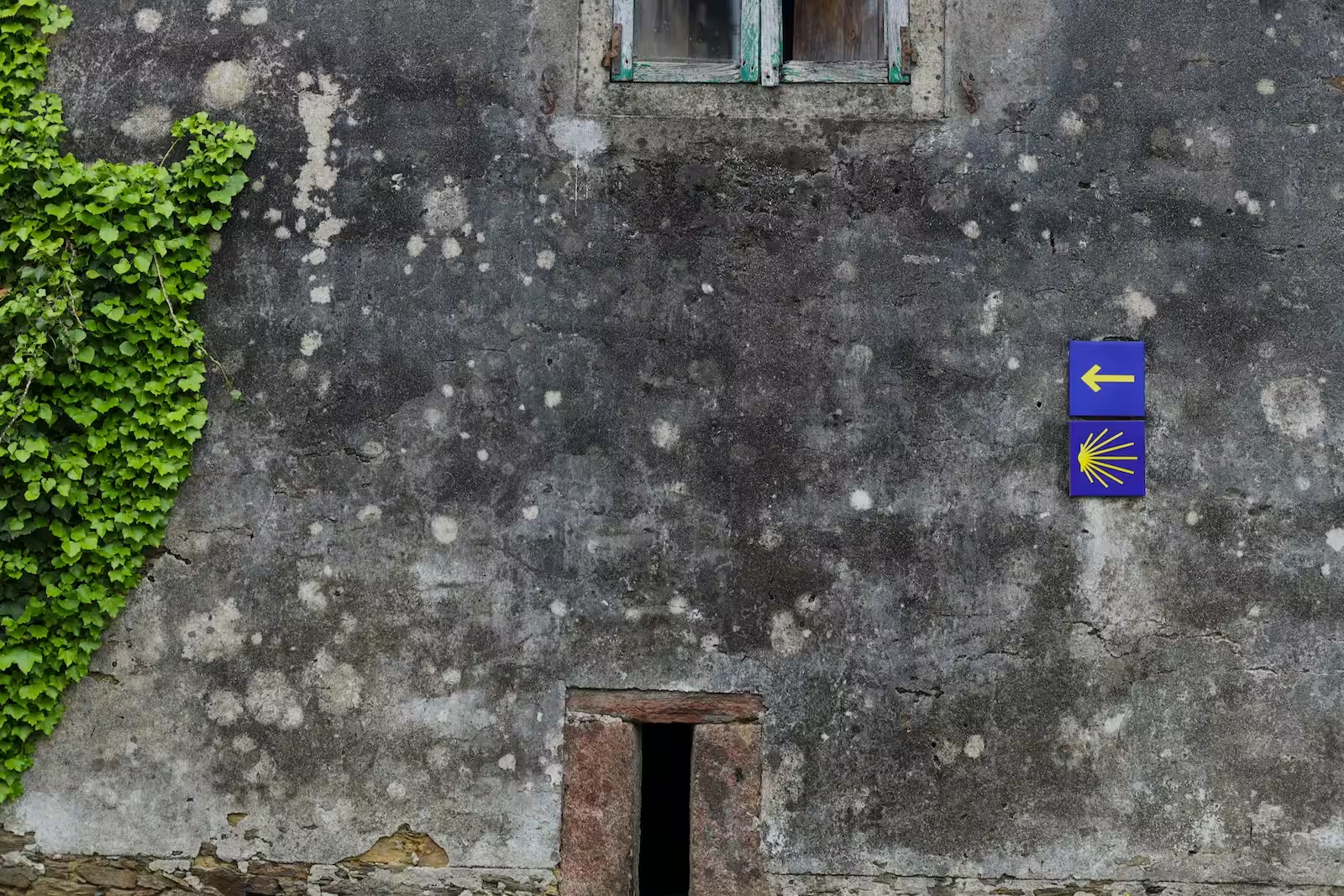There is nowhere in the world that draws curious travellers like Japan. From its breath-taking natural scenery, delicious food and futuristic technology, there is something about this country that fires up people’s imagination. Bringing all of this together then, there is perhaps no better way to visit Japan than by overnight sleeper train. Curl up in a cosy berth, watch the sun rise over the mountains and tuck into a bento box, on a train journey that combines everything that makes Japan so distinct.
One of the last sleeper trains in the nation, the Sunrise Express (combining the Sunrise Seto and Sunrise Izumo) takes visitors all the way from Tokyo to Okayama. The train then divides and rides south to Takamtsu on the Seto line, and north to Matsue and Izumo on the Izumo line. The entire journey is covered by the Japan Rail Pass, costing a base rate of €242 for 7 days for an adult, or €384 for 14 days. This pass gives you unlimited access to practically every train (and bus, ferry and airport transfer) across the country, making it a super easy and most cost-effective way of seeing Japan as a tourist. Hotels and other accommodation in Japan can be very expensive, so combining travel and stay in one ticket is a great way of reducing costs, covering more distance and trying something a little more adventurous than a simple day train or flight.
In this article, we will take a look at the distinct features of this train, including tips for making the most of your journey, as well as a sample itinerary for you to enjoy the Japanese adventure of your dreams, whilst on a reasonable budget. With Japan's covid restrictions finally being lifted as of October 2022, there is no better time to board the Sunrise Express!

The Train
The Sunrise Express is a unique train that offers an overnight journey unlike any other. There are three classes in the train, a Type B single berth, Type B twin and dorm-style capsule corridor.
Type B single berth and Type B twin – these are the premium sleeping pods and offer very comfortable, private lodging for your train journey. However, these come at a hefty price, requiring an extra charge of around €60 per person!
Dorm-style nobinobi berths – For this reason, it is highly recommended that you opt instead for the dorm-style berths which come at no extra cost to your pass. These berths are very Japanese in their arrangement, and may feel a little unusual for international tourists, since they offer very little privacy and offer more of a thick carpeted floor than individual mattresses. Each berth is separated by a half-wall divider and small curtain, yet travellers very much sleep side by side in this long corridor. If this sounds traumatic to you, then perhaps read no further, but the experience can actually feel very cosy and exciting. Leave your shoes in the little corridor and clamber into your bunk, each traveller getting their own set of clean sheets. With your own little window, you can lie in amongst your sheets, hearing the snores of fellow travellers all around you and watch the hours and hours ofJapanese countryside fly by.
For a tour of the different types of berth, check out this video from legendary train expert, The Man in Seat 61.
The train also comes with a lounge car, with high stools for eating your food, drinking a coffee and getting incredible views through the large windows. There is no restaurant car on board, so it is encouraged that you load up on food for the journey, such as a bento box. Bento boxes are hugely popular food boxes in Japan, made especially for travellers, and are available everywhere in large train stations. In your box, you will find an artfully arranged meal of little bite-sized food items, separated by little dividers. The Sunrise Express is a perfect example of Japanese ingenuity, a service that is high-tech, comfortable, impossibly clean and of course, always on time. If you came to have a proper Japanese experience: sitting on your train, tucking into a bento box and flying through Japan’s sprawling cities and terraced countryside is certainly one of the best you can have.

Example Itinerary:
This itinerary is just an example of the type of trip you could make with 7 days in Japan. Combining history, culture and beauty, as well as ensuring you make the most of your rail pass, this is a perfect introduction to Japan. That being said, there are any number of variations on a train trip, with unlimited bullet train rides included in your ticket. If you don't mind busy travel days you can cross great distances over just a short amount of time on comfy seat bullet trains. On this journey however, we take the Sunrise Express as a route, following its path through central Japan. Despite it only having sleeper-style arrangements (no seats), many of the journeys on this route are a mere few hours, meaning you can treat a journey on this train as a short nap rather than a whole night! Just make sure if you do fall asleep to set an alarm - so you don't miss your stop.
Day 1
Tokyo – Izumo – 12 hours
Assuming you are starting in Tokyo, it makes sense to take the train all the way to the end of the Izumo line in one go, and then stagger your journey back to Tokyo. Make sure you bring earplugs, and if you have space for one, it might even be worth bringing a sleeping bag. The train leaves Tokyo at 10pm and gets in at Izumo 9.58am (on the dot!). Hopefully, your journey will have been cosy and well-rested so you’re ready for a day of exploring beautiful, historic Izumo. Izumo is an off-the-beaten-track city, home to ancient architecture and a buzzing artist community. For those interested in Japan’s Shinto traditions, Izumo is home to the nation’s oldest shrine, Izumo Taisha. Izumo is also right by the coast, making it the perfect place to hit the beach, and take in a beautiful sunset. Inasa Beach is also home to a particularly photogenic torii gate, built into the side of a striking rock.
That night, stay in a local ryokan, a traditional-style guesthouse with distinctive padded rooms and roll-mat sleeping setup. There are many luxurious Ryokans to visit around town, such as Takenoya Ryokan, but for a budget-friendly night, try NALU house, around €30 a night, or this Airbnb hostel-vibe guesthouse for €25.
Day 2
Izumo – Matsue – 25 minutes
From Izumo, hop back on the Sunrise Izumo Eastbound to Matsue (just half an hour down the line) to visit Matsue. Here, the highlight is Matsue Castle, one of Japan’s 12 original castles and a breath-taking example of Japan’s feudal history.

Matsue – Okayama – 2.5 hours
That afternoon, get the train from Matsue to Okayama and spend your evening dining in one of the countless cheap, local bars around Okayama Central Station, before crashing in a hotel for the night. Okayama is a large business hub in Japan and for that reason, there are plenty of budget friendly Western-style hotels on offer. If you’ve missed sleeping on a Western-style raised bed over the past few nights – here is where you can make up.
Day 3
The next day, take a leisurely few hours exploring Okayama Castle and Okayama Koakuen Garden. Start with the park in the morning and enjoy a blissful stroll in one of Japan’s most beautiful parks, before having lunch in one of the tourist restaurants nearby. In the afternoon, take a tour of the castle, exploring the many exhibits detailing its long history and take part in an interactive pottery class. Visitors also have the chance to dress up in traditional kimono.

Day 4
Okayama – Hiroshima - 2.5 hours
A popular and sobering day trip from Okayama is to visit Hiroshima. Take a Shinkansen train early in the morning and visit the Peace Memorial Park and Museum, to learn all about this town’s tragic history. After the museum, cross the river to see the Atomic Bomb Dome, a hollowed-out building that survived the blast and finally, Hiroshima Castle, a reconstruction of another of Japan’s most beautiful castles.

Hiroshima – Osaka – 1.5 hours
That evening, get a high speed Shinkansen train all the way to Osaka. One of the jewels of Japan, Osaka is a buzzing mega-city, full of bars, restaurants, museums and nightlife.
Day 5
For a day in Osaka, check out the Museum of History or National Art Museum in the morning, before heading to Kuromon Market for lunch. In the afternoon, head to the Tenma shopping district and nearby Osaka Castle, or if you are castled out, try the Shitennoji Temple. In the evening, make sure you head to Shinsekai, an atmospheric food district full of neon lights and mouth-watering vendors.

Day 6
Osaka – Kyoto
The next morning, hop on a Shinkansen to Kyoto, for an incredibly fast 15-minute bullet train journey. The city is a treasure trove of historic sites and temples, from the Nijo castle, Sento Palace and Kyoto Imperial Palace. Just south of Kyoto, a must visit is the Fushimi Inari Shrine, the world-famous alleyway of torii gates and national symbol of Japanese pride. Whilst there, check out the Fushimi Sake District, full of traditional sake breweries and sample some to take home.
Day 7
Osaka – Tokyo – 6.5 hours
Kyoto is simply too large to even scratch the surface of in just a couple days, but if you do just have two days, choose a region of the city (e.g. central on one day and south on the other) and explore the top sites on your list. Whatever your interests, there is a world to explore, such as food, shopping, museums, and history in particular. At the end of your second day, hop back on the train to Osaka, before changing to the Sunrise Express, for your final night layover to Tokyo. The train leaves at 00.34am and gets into Tokyo at 7.08am.
Want to Visit Northern Japan?
The Sunrise Express takes travellers through central and southern Japan, but if you’re in the North and want to experience an alternative train travel – why not try the “joyful” Kotatsu train in Iwate Prefecture? This absolutely adorable, cosy day train offers travellers soft-cushioned seats and low tables, each fitted with its own snug duvet and under-table heater. Based on the common Kotatsu table style, these tables look endlessly comfy and will keep your feet toasty as you gaze out at the beautiful countryside views.

Starting from Skratch? Here’s a Few Tips to Get Started:
https://www.seat61.com/Japan.htm







.avif)






.jpg)

